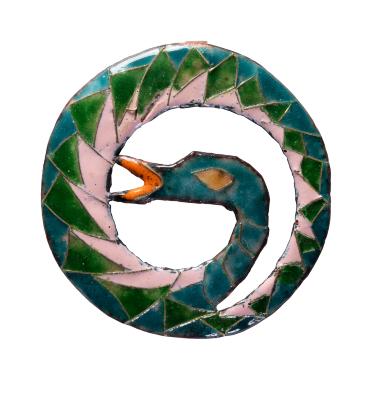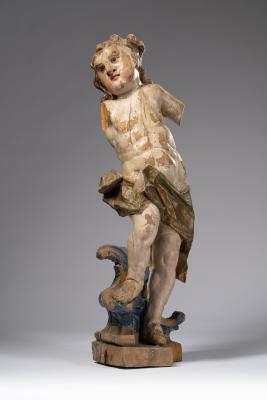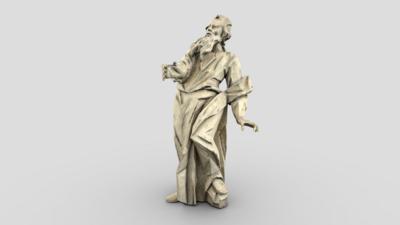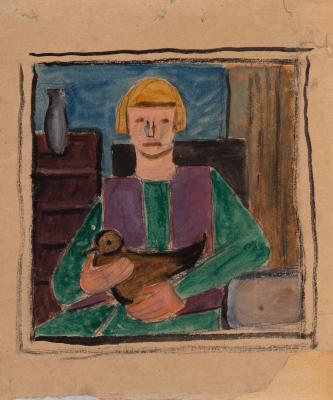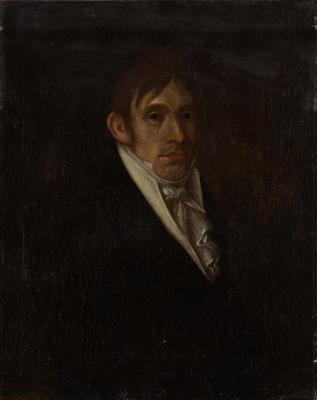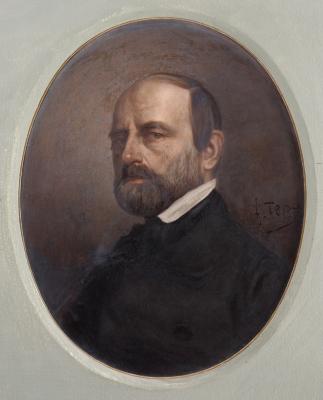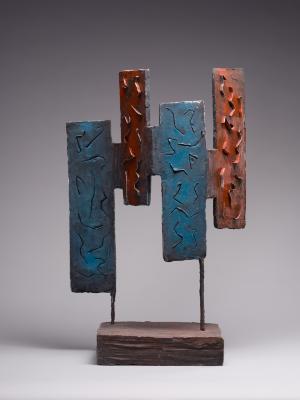Most of the work is taken up by a full face portrait of a young woman. Compared to the overall surface of the painting, the woman’s head is slightly deepened in the layer of paint and soil. The face of the portrayed woman is sharply narrowed at the bottom; her chin is forked. The blue elongated eyes, a straight nose, and a long neck are reminiscent of the facial features we are used to seeing in icons. Her brown, slightly curly hair covers the ears. The woman is dressed in the white clothes. The background is ochre green, the horizon line is outlined. There are illegible inscriptions on the back of the work. Most of Boichuk's works were destroyed after his execution by the Soviet authorities in 1937. However, some of Mykhailo Boichuk's works have been preserved thanks to the Lviv artist Yaroslava Muzyka, who, since 1914 when Mykhailo Boichuk was forced to leave Lviv with no opportunity to take his paintings with himself, had in keeping the artist's works and his small but significant archive. The Yaroslava Muzyka Fund is housed in the Lviv National Art Gallery. Presumably, the works we see now are only drafts and sketches for greater compositions.





